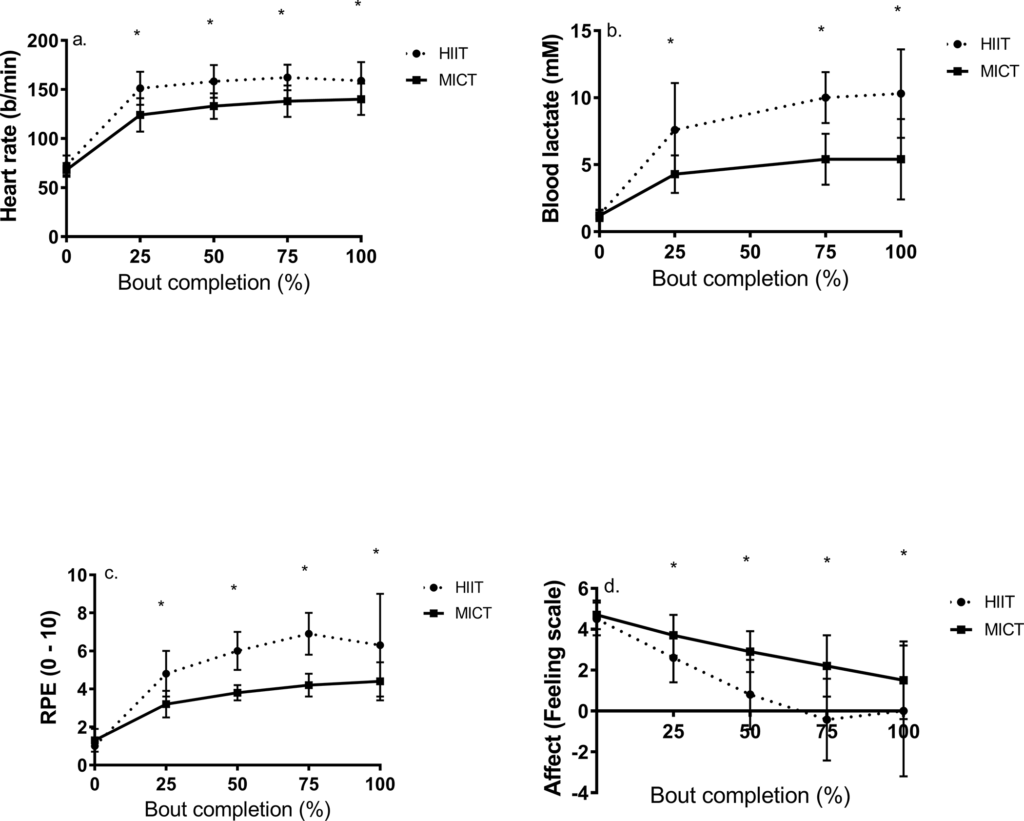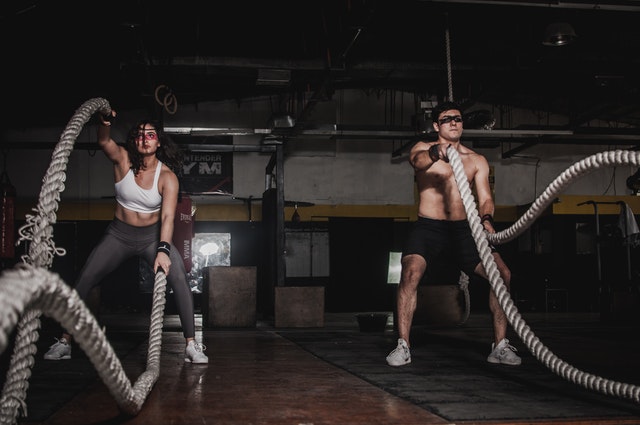At this time of year, your patients are likely embarking on a new exercise program to get and stay in shape in the new year. This study, published in PLOS ONE, shows that high intensity interval training, better known as HIIT, is far more enjoyable that moderate intensity continuous exercise (MICT). This single factor could be a motivator for maintaining a long-term exercise program.
Experts recommend 150 min/wk of moderate intensity continuous exercise 
Why High Intensity Interval Training?
As this study shows, HIIT takes less time, it can also be more enjoyable, provided that the program is planned out appropriately to avoid injury or unwanted post work-out recovery pain. As participants worked out consistently, adding more intensity over time, they actually enjoyed the HIIT program more than a moderate intensity program. The following explains why a HIIT program was preferred and resulted in greater results than an MICT program.
Healthy, non-obese (BMI < 30 kg/m2), recreationally active men (n = 8) and women (n = 4) were recruited via word-of-mouth from the university population from September to December 2015. Participants performed a minimum of 3 h/wk of physical activity including aerobic exercise, resistance training, surfing, group exercise, hiking, and/or non-competitive sport and had done so for at least 1 yr. None reported any fitness-related goals such as training for a particular event. Only one participant regularly performed cycling-based HIIT similar to that performed in the current study.
- Participant initiated incremental exercise on an electrically-braked cycle ergometer (Velotron DynaFit Pro, RacerMate, Seattle, WA) to determine VO2max using a ramp protocol. Work rate began at 50–70 W for 2 min followed by 25–35 W/min increases in work rate until volitional fatigue. Maximal workload (in Watts) from this bout was used to determine the exercise intensities of subsequent trials.
- At the same time of day as the VO2max trial within subjects, participants performed either HIIT or MICT, whose order was randomized.
- Trials were separated by a minimum of 2 days to maximum of 7 days. Exercise began with a 5 min warmup at 25% Watts/max (Wmax). High intensity interval training consisted of eight 60 second bouts of cycling at 85% Wmax separated by 60 seconds of recovery at 25% Wmax. During MICT, participants pedaled at 45% Wmax for 20 min. Across regimens, exercise duration was slightly different (16 vs. 20 min).
- Rating of perceived exertion (RPE, Category Ratio-10, 11-point scale)), and affect (11-point scale, rating from +5 very good to -5 very bad) were recorded pre-exercise while participants were seated on the ergometer and at 25, 50, 75, and 100% of session completion. During HIIT, these were measured at cessation of each 60 sec interval in the order of RPE followed by affect.
- For affect, they were read the following text: While participating in exercise, it is common to experience changes in mood. Some individuals find exercise pleasurable, whereas others find it to be unpleasant. Additionally, feeling may fluctuate across time. That is, one might feel good and bad a number of times during exercise. They were asked to respond to each scale in terms of how they felt at that moment.
Results / Enjoyment for HIIT vs MICT was significantly higher compared to higher-volume MICT. Three potential factors explain this response:
- First, the intermittent nature of HIIT provides participants with multiple recovery intervals which may provide a “break” from less positive effective responses, which are seen with continuous exercise at supra-VT (ventilatory threshold) intensities.
- Second, many participants viewed MICT as quite monotonous and did not enjoy maintaining a moderate effort for 20 min. In contrast, HIIT provides an ever changing stimulus that breaks the entire session up into small increments of work interspersed with recovery.
- Third, there is a certain level of accomplishment that is experienced during HIIT which is not apparent in MICT. Overall, this may give the exerciser a greater amount of self-confidence and may explain why 92% of participants preferred HIIT to MICT.
Fig. 1

Conclusion / Data reveal that HIIT requiring a shorter time commitment than MICT led to greater enjoyment in a small sample of active men and women. Despite greater metabolic stress, over 90% of participants preferred HIIT versus MICT. These findings may support increasing integration of HIIT into the regular exercise routine of healthy, active individuals.





